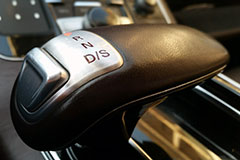Automatic Transmissions and Their Differences - Vol.392
Since its introduction several decades ago, the automatic transmission has become a standard in many car markets around the world. Its efficiency, availability, and reliability have made it a favorite among drivers. The manual transmission is still alive and well but has mostly found its application in sports cars and those car models offered in the lower price range category.

Today, drivers are often faced with a choice between different types of automatic transmissions. This is not always an easy choice to make as it requires certain knowledge about the way these systems work and the differences between them.
The three very common automatic transmission systems used by car manufacturers these days are the Continuously Variable Transmission (CVT), Dual Clutch Transmission (DCT), and the Automated Manual Transmission (AMT).
Upon hearing them, these names might ring a bell with the average driver. But most car lovers are not truly familiar with everything that makes these automatic transmission systems differ among themselves. Learn more about each of them.
Continuously Variable Transmission (CVT)
Cheap to make and fuel-efficient, CVT is the common man's gear shifter. It is designed to provide a smooth ride in a family car. No need for dynamics and excitement here. CVT works in quite an innovative way, as it does not have a limited and pre-set number of gears or a clutch in a classical sense.
Instead, it is constructed as a belt connected to two pulleys, one on the engine, the other on the wheels, always keeping the rpm of the engine in the most efficient range. More powerful engines have been proven to struggle with this system.
Dual Clutch Transmission (DCT)
This one is for all the nostalgic drivers. The ones missing the manual. The racers that never were. DCT is a hybrid of a kind, as it provides all the benefits of an automatic transmission and faster and more precise manual gear shifting. This definitely adds more dynamics to driving. Some might even say it is fun.
The way DCT delivers all this is through a pair of gear sets separating the odd from even gears (dual clutch). Most driving enthusiasts praise this system for enabling a great driving experience. Its downside is the high production price, which usually means that the DCT is installed in more expensive models.
Automated Manual Transmission (AMT)
Essentially, this is an old technology. As its middle name proudly suggests, it is a manual transmission system but with a certain level of automation. For those drivers who deem the automatic transmission too expensive but are panic-stricken with the thought of using the manual gear shifter, AMT could be a good choice.
The construction of the AMT is best explained as a common manual gearbox, assisted with added electronics and hydraulics. Due to this, it is significantly slower compared to the classical AT. However, it is fuel efficient and reliable.
Modern technology has improved the AMT, with some models being controlled by the computer and others being able to shift gears without the driver needing to use the clutch. Driving an AMT may seem like having an invisible assistant helping you move the gear shifter but is still a popular solution for lower price-range vehicles.
The Future
The technology and engineering solutions behind these three automatic transmission systems are very different. However, all of them have found a successful application in their respected niche. With a different price and therefore greater availability, these systems will most certainly contribute to the rising popularity of the automatic transmission.